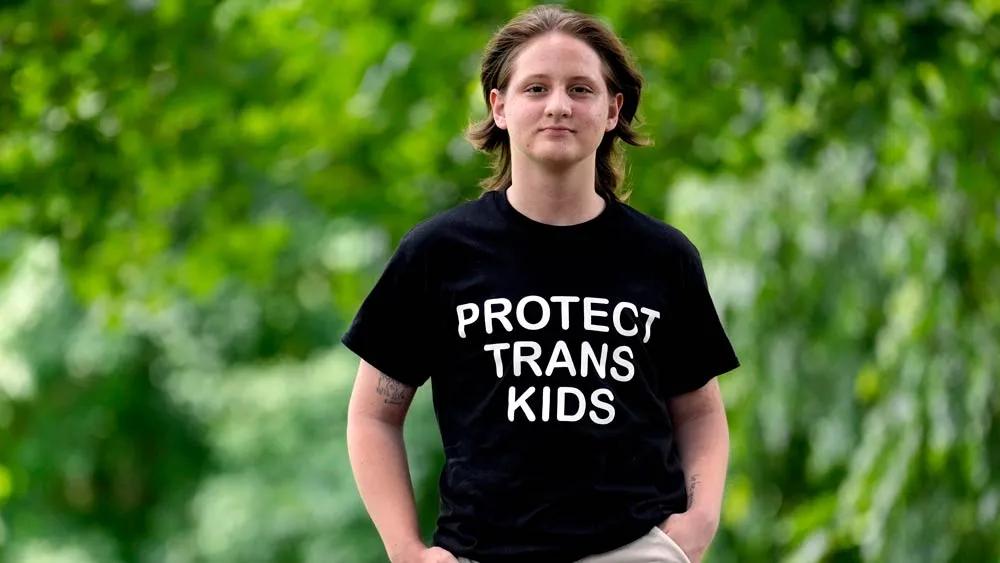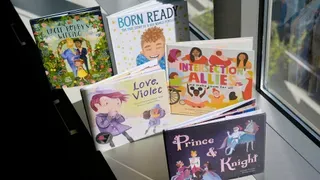May 2, 2011
Trove of Historic Records of Holocaust Goes Online
Kilian Melloy READ TIME: 4 MIN.
A trove of papers and photographs documenting the lives of Holocaust victims and survivors includes notable names like Nobel Peace Prize winner Elie Wiesel and former Israeli Prime Minister Menachem Begin. But Benzion Baumrind's name might have stayed forgotten to his descendants without the records kept by a humanitarian aid agency.
A genealogist discovered Baumrind, one of 6 million Jews killed during the Holocaust, was in her family with one stray document buried in a database of historic papers and photos kept by the American Jewish Joint Distribution Committee.
With over 500,000 names, and more than 1,000 photographs, the searchable collection documents the relief organization's vast efforts during World War II and the postwar era in 24 countries, from China and Japan to the Dominican Republic and Bolivia. The records, being made available online for the first time on Monday, open a singular view into the lives of survivors that the JDC aided during that cataclysmic period.
"We can get broader pictures of the actual everyday social life in the aftermath of war," Kenneth Waltzer, director of the Jewish Studies Department at Michigan State University, said of the collection.
Until now, the organization's archive has been largely inaccessible to the public, kept at a private storage warehouse located a short subway ride out of Manhattan.
Volunteers entered names in a database for over a year; rare, fragile documents were scanned into the computer system. Users of the site can submit names to identify people they recognize in the photographs, which may be later added to captions.
"A website like this is where history meets technology," said Gideon Taylor, an executive with the New York-based committee. "It's taking history out of the dusty files... And bringing it out into the community."
The committee plans to put even more documents from its archive online later this summer.
The project is one of a growing number around the world aimed at making available on the Internet primary records about the Holocaust.
"It is a world phenomenon that's launched by the technology," said David M. Kleiman, president of Heritage Muse Inc., a New York-based genealogy technology firm.
The collection offers glimpses of the lives of children who survived the Holocaust to become moral and spiritual leaders, politicians and artists.
There was the 16-year-old teenager who would become an author and one of the world's most esteemed humanitarians - Wiesel - listed on a document naming 426 orphaned boys from the Buchenwald concentration camp who were taken to Paris by the committee in 1945. Also on the list: a future Chief Rabbi of Israel and one of the youngest surviving prisoners of Buchenwald, Israel Meir Lau, who was 7 years old when he was liberated.
Begin, the future Israeli prime minister, is named on a list of 9,000 Polish Jewish refugees receiving the agency's aid in Vilna, Lithuania, in 1940.
Another person named in the files is Peter Max, the famed New York artist whose cosmic-colored works became a signature style of the hippie 1960s.
"Looking back, it's amazing that people had the will to organize, to create organizations to help people who fled other countries and were in dire need," said Max, who was 6 months old when his family, the Finkelsteins, fled Berlin, and found safe haven in Shanghai, where the JDC also had a relief operation.
For Linda Cantor, the past president of the Jewish Genealogical Society of New York and a volunteer who helped put the names online, the collection helped her find a relative she never knew about.
A researcher with 30 years of experience in genealogy, even she was surprised when she came across a document that connected her to Baumrind, who lived in the Polish town where her family was from.
That document, a list of Polish Jews expelled by the Nazi German government and living in the border town of Zbaszyn, Poland, between 1938 and 1939, showed that her great-aunt was named as Baumrind's contact in the United States. It was a tantalizing clue that would help her document him as a cousin.
"My discovery allowed him to have a place in somebody's memory," she said.
The committee, commonly known as the Joint, was founded in 1914 to help Jews in need in war-ravaged Europe and Palestine. During World War II, it provided assistance to refugees from Lithuania to Japan and helped Jews escape Europe, including by booking them on ships headed for the Americas.
Claus Hirsch, 76, of New York, fled Berlin with his parents and brother and found asylum in Shanghai and had to rely on the Joint for hot meals. As a volunteer, going over lists of names and keying them into the database, it has been an emotional experience.
"It's nice to see a name on a list," he said, before he began to weep. "I saw names of people I had known years ago. And I hadn't thought about them in 30 or 40 years."
Kilian Melloy serves as EDGE Media Network's Associate Arts Editor and Staff Contributor. His professional memberships include the National Lesbian & Gay Journalists Association, the Boston Online Film Critics Association, The Gay and Lesbian Entertainment Critics Association, and the Boston Theater Critics Association's Elliot Norton Awards Committee.






